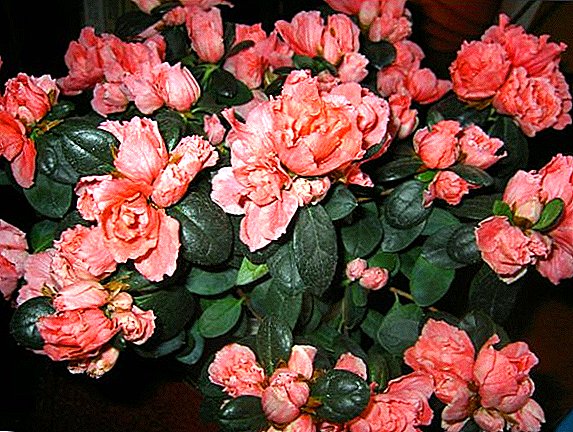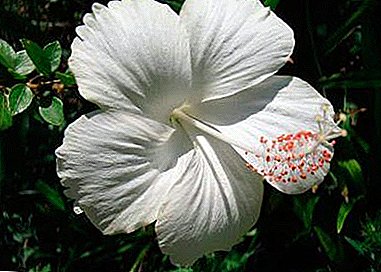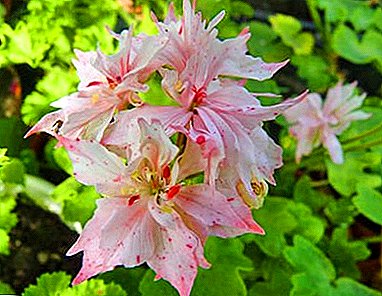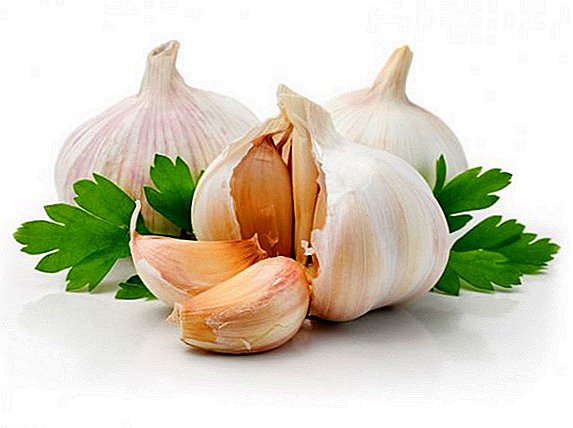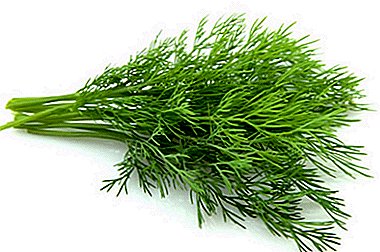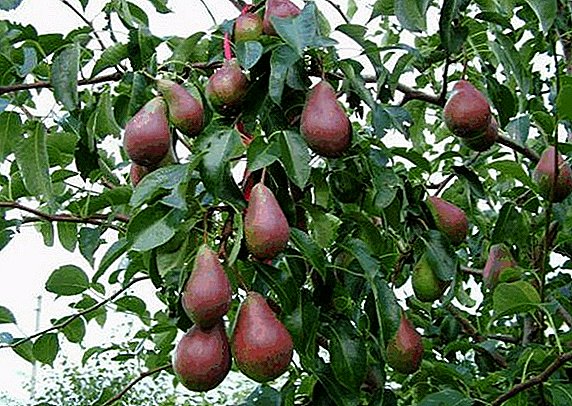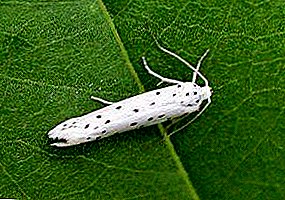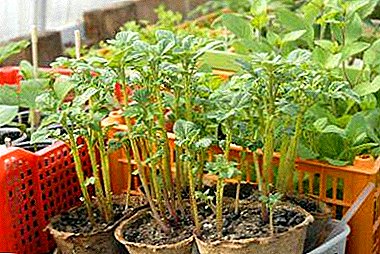
The method of growing potatoes with seeds and not tubers is so unpopular that not every gardener has heard of him.
Meanwhile, this technology has many advantages. Yes, it is more laborious compared to the usual, but definitely worth the effort.
In this article you can learn all the features of growing vegetables from seeds, study the description of the most suitable varieties for this, and see the photo of how the seedlings obtained in this way look.
As well as the secrets of the successful cultivation of vegetables and the frequent mistakes made in this case.
Advantages and disadvantages
First of all, it is important to understand the advantages and disadvantages of the method.
Pros:
- It happens that the tubers for planting are infected, and the crop is not the best. Growing potatoes from seed eliminates this problem. Seed method gives healthy, resistant to adverse conditions of the plant.
- The cost of seeds is several times lower than the cost of tubers. Thus, this is an opportunity to save money.
- Many prefer to plant tubers last year's harvest. The choice in favor of seeds eliminates the need to look for a room to store them.
- A huge selection of varieties makes it easy to choose the one that will satisfy all conditions.
Minuses:
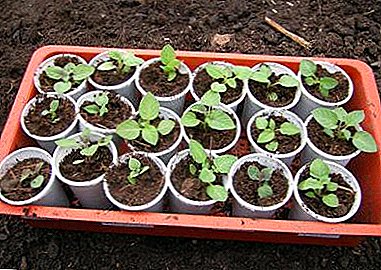 The shoots are sensitive to any inconvenience and in the absence of adequate lighting too stretched.
The shoots are sensitive to any inconvenience and in the absence of adequate lighting too stretched.- Without the constant use of biopreparations, seedlings will often hurt.
- Transplantation should be done with great care - seedlings grown from seeds are more fragile.
- Since the root system of such potatoes is weak, at first the soil should be as loose as possible.
- The first tubers will be very small. A good harvest can be obtained only in the second year.
The most suitable varieties
Early:
- Gonna. High-yielding potatoes with elongated-oval tubers. Resistant to viral diseases and easily tolerates any climatic conditions.
- The empress. Rapidly ripening variety for table use. Differs unpretentious and good keeping quality.
- Farmer. Large potatoes with excellent taste. It is highly resistant to disease and degeneration.
- Triumph. Very productive variety, tolerates adverse conditions. In warm climates, it is possible to get two harvests per year.
How to get a rich harvest of early potatoes can be found here.
Mid-season:
- Ballad. Forms medium and large-sized tubers with high taste. Differs in fine productivity regardless of weather and climatic conditions.
- Virgo. High-yielding variety resistant to hybrid and viral diseases. It is distinguished by the rapid formation of tubers.
- Beauty. It is characterized by good yield, large-fruited. It has a high taste.
It should be noted that each vegetable has its own planting dates.
Seedling processing
Seedlings are often subject to fungal disease. To prevent this possibility seeds are planted before planting - for example, with a solution of Fitosporin or any other treater. Seeds are gently laid out on a rag, poured with a solution and left on average for half an hour. It is better to give preference to cloth rather than gauze, so that small seeds are not confused.
Soil preparation
 The soil for seedlings requires the most fertile. You can either buy it in a special store, or make it yourself.
The soil for seedlings requires the most fertile. You can either buy it in a special store, or make it yourself.
In order to prepare the soil mixture, you will need:
- 1/7 of sand.
- 1/7 of humus.
- 2/7 garden land.
- 3/7 peat.
The resulting mixture is thoroughly mixed, and then decontaminated antifungal medication. The soil should be loose and necessarily sifted.. This soil absorbs moisture well, contributing to better germination of sown seeds.
Features of sowing seedlings
Sowing is one of the most important stages of growing seedlings of potatoes at home, you need to take into account all the nuances to get good healthy seedlings for one season.
When to plant?
Seeds are sown in boxes early enough for the seedlings to grow. Optimal for this planting dates for seedlings - end of March or beginning of April.
Procedure
Growing seedlings is a laborious process. When the seeds germinate, you can start sowing them. Consider how to plant the plant in open ground. So, the process should look like this:
- In damp soil, small depressions are made in the form of rows of 1-1.5 cm. The distance between them should be at least 7-10 cm.
- Seeds are laid out at a distance of 3-5 cm from each other and sprinkled with soil or sand. The optimum thickness of the top layer is 0.5 cm. It is advisable to slightly compact it in order not to wash it off when watering.
- After that, the soil is moistened with a sprayer, the container is covered with a film or glass and placed in a warm place with good lighting.
Nuances of care
It is important to ensure that the seedlings do not freeze, so it is better not to put it on the windowsill. Watering is done exclusively through the pan - water should not fall on the leaves. It is also impossible to overfill, as excess water can cause sprouts to begin to rot.
Read more about watering potatoes, including drip, read here.
Picks
When the seedlings form a pair of leaves, you can start picking. It will require a special soil and separate peat pots in which the seedlings will be transplanted. The root should be shortened by no more than a quarter, otherwise the plant may die.
To make the seedlings more easily and quickly rooted, after picking, it is recommended to fertilize it with a solution of ammonium nitrate with the calculation of 10 g of substance per 10 liters of water (read about how and how to fertilize potatoes, read here).
IMPORTANT! Too early picking will lead to stress and negatively affect the growth of potatoes, and too late threatens that the grown roots are intertwined and it will be difficult to separate them.
A photo
Look at the photo, what the seedlings of potatoes obtained from seeds look like.



Seedless way
Agrotechnology as a system of methods and means of cultivating plants suggests another method that differs from that considered earlier. You can grow a vegetable and the so-called seedless planting method (about new, non-traditional ways of planting potatoes in the garden, we told in this article). In this case, the seeds are planted directly into the ground.
Instruction
In order to achieve a large crop, it is necessary to study the basic technology of cultivation. You can plant seeds no earlier than May, preferably in the first half of it. Before planting on a previously prepared soil, rows are drawn at a distance of 50-70 cm from each other and filled with water. When it is fully absorbed, seeds can be planted on moist soil. The depth of landing should be at least 0.5 cm, the intermediate distance should be at least 5-6 cm.
How to care?
Care after planting is carried out in compliance with some rules. At first, especially in regions with a cool climate, beds are recommended to cover for the night. When the seeds germinate, this need will disappear.
With the advent of several leaves, seedlings are planted at a distance of 25-30 cm from each other, so that they do not interfere with each other and do not intertwine with roots.
Not the last role is played by the fight against the Colorado potato beetle, which represents a real disaster for potatoes.
Country tricks and frequent mistakes
Some savvy gardeners successfully apply their secrets of cultivation in practice:
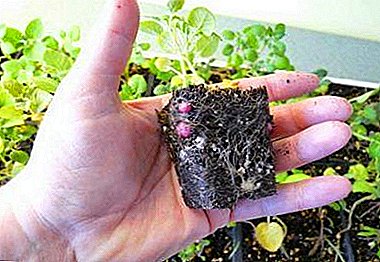 For example, the method of planting seeds in diapers or diapers has long proved its effectiveness.
For example, the method of planting seeds in diapers or diapers has long proved its effectiveness.- To make the seedlings more stable, they can be “hardened” - brought to the fresh air, each time increasing time.
- If you save the potatoes from the buds that have not yet opened, they will not spend extra forces on flowering.
Of course, not without errors:
- When growing seedlings, some gardeners too abundantly sprinkle the seeds with earth. In this case, most of them may simply not climb.
- Seeds should never be soaked in water. Fabric, which will regularly moisturize, quite enough.
- Not everyone considers that the germination of potato seeds is low, because of this the number of seedlings may be less than expected.
- Where and how is it grown in Russia?
- How to make a business plan for growing vegetables on an industrial scale?
- What is mulching and what materials are needed?
- Where does a vegetable come from and where is it popular?
In practice seed cultivation is not at all difficult, albeit troublesome. But the result justifies all the time spent - the resulting grade will be of the highest quality. If you follow all the recommendations and act correctly, a grown potato in a year will surely please you with an excellent harvest.


 The shoots are sensitive to any inconvenience and in the absence of adequate lighting too stretched.
The shoots are sensitive to any inconvenience and in the absence of adequate lighting too stretched. For example, the method of planting seeds in diapers or diapers has long proved its effectiveness.
For example, the method of planting seeds in diapers or diapers has long proved its effectiveness.